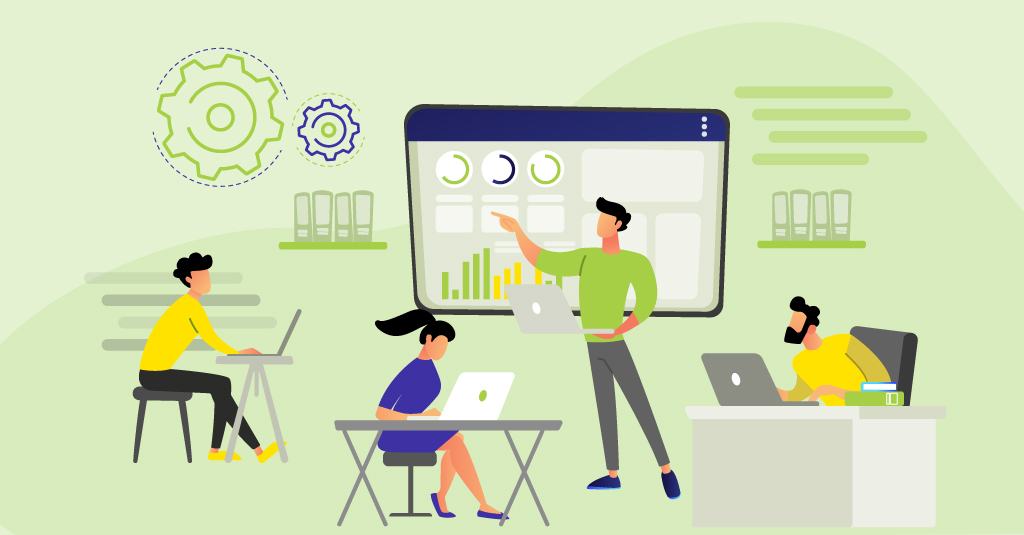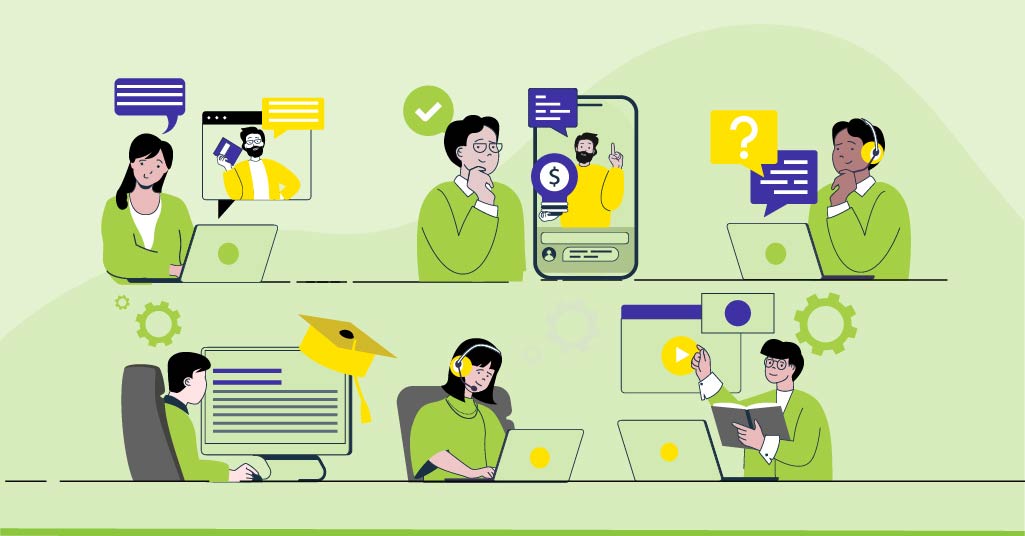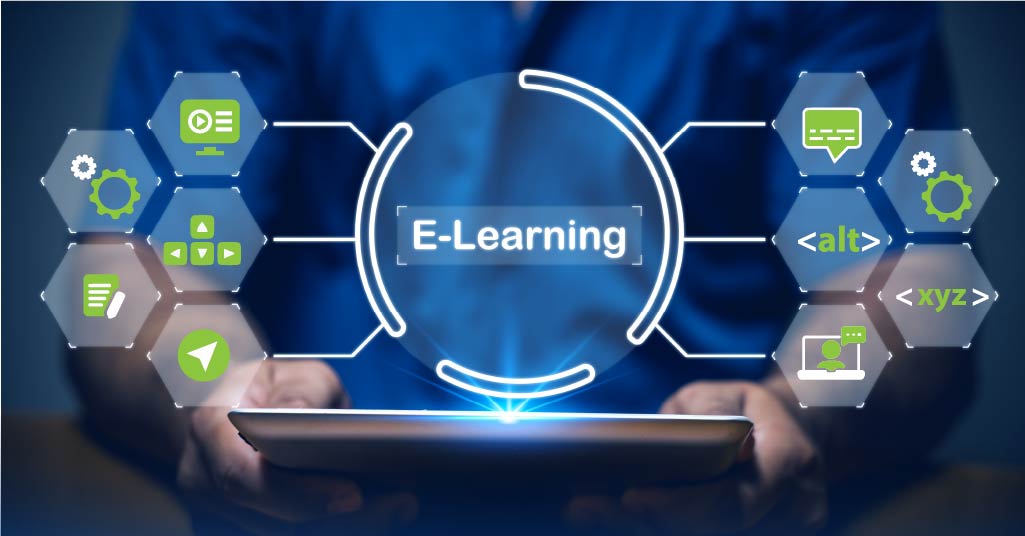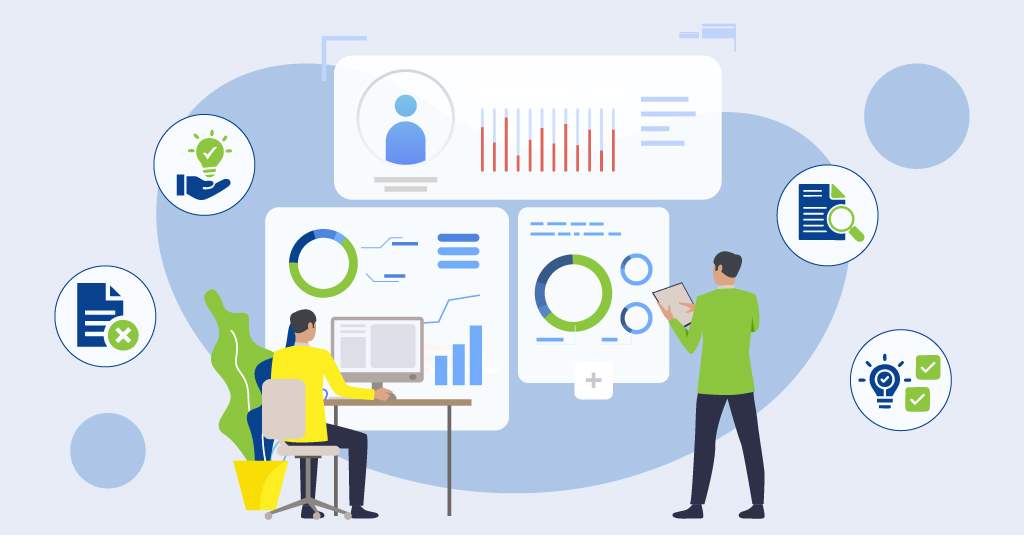A recent dataset collected from three enterprise business units showed a consistent yet understated pattern: when learning interventions were placed directly within operational systems rather than delivered through scheduled modules, employee task accuracy stabilized faster, and the lag between training and application reduced in measurable increments.
The numbers were not dramatic when viewed in isolation, but the shape of the improvement remained stable across varied functions, which suggested that the underlying mechanism was linked less to the content itself and more to the timing and proximity of instructional support.
This creates an entry point for enterprises evaluating how learning in the flow of work will influence performance structures in 2026, particularly as operational complexity grows and traditional training cycles strain against the pace of daily execution.
As organizations adopt more interconnected platforms, the pressure to align learning with real-time tasks increases, not because the concept is novel, but because disjointed instructional cycles now create operational drag that becomes visible in metrics leaders watch closely.
This forms the foundation for examining workflow training as an operational strategy instead of a supplementary learning trend.

Why Learning Embedded in Workflows Is No Longer Optional
Many enterprises continue to treat learning as an event-driven activity even when their broader work systems have shifted into continuous, fragmented, and multi-application routines.
Employees often move through multiple interfaces within a single workflow, and these interfaces update frequently, creating a type of cognitive scatter that does not pair naturally with traditional training models.
When learning remains outside this movement, recall begins to erode sooner than anticipated, and performance variance increases in pockets that are difficult to trace until quarterly reviews surface irregularities.
This is where embedded learning becomes functionally relevant. Its advantage is not convenience but alignment. When instructional cues appear at the moment of decision-making, the distance between learning and execution narrows, which reduces the probability of error formation during task switching.
The effect is subtle but consistent, particularly in process-heavy environments where even minor hesitations compound over time.
As organizations attempt to streamline operations, workflow learning becomes part of the structural model rather than an optional enhancement. The shift is gradual, but the transition from standalone modules to embedded guidance reflects an operational requirement more than an instructional preference.
This creates a natural connection to the next consideration, which involves understanding how daily workflow density influences the design and placement of embedded learning.

How a Daily Workflow Density Shapes Learning Design Decisions
Daily workflow density, meaning the number of micro-actions packed into a task sequence, influences where learning can sit without interrupting operational flow. High-density functions make it clearer that instructional cues need to align precisely with the moment of action rather than sit around it.
Key factors that influence embedded learning placement:
- Frequency of system switching affects how much context an employee can retain between steps.
- Points where cognitive load increase, since prompts in these areas must be brief and tightly aligned.
- Variability in how the task is executed, especially across regions or teams.
- Predictability of the workflow, which shapes whether cues can be fixed or need adaptive behavior.
- The nature of the decision involved, procedural versus analytical, determines the depth of guidance required.
These indicators generally guide whether a cue belongs inside a specific field, is tied to an action trigger, or is attached to a conditional step. Some of these placement decisions intersect with broader shifts in design approaches, including the rise of the AI-designed learning experience, which continues to influence how organizations think about embedding guidance inside operational systems.
The maturity of enterprise systems adds another constraint, since not all platforms support embedded guidance natively, and temporary plug-in structures rarely hold when scaled.
As these constraints become clearer, the focus moves toward how embedded learning begins to shape organizational behavior once it operates consistently within daily workflows.

Where Does Embedded Learning Changes Organizational Behavior
As embedded learning becomes part of routine work, observable changes begin to appear in team behavior, operational metrics, and content usage patterns. These changes do not announce themselves through large performance jumps; they surface gradually through more predictable workflows and steadier task execution.
-
Smaller gaps between learning and immediate application: When learning guidance sits directly at action points, the need to recall information from earlier modules decreases. This reduces error rates in areas where employees typically rely on incomplete memory. Over time, teams rely less on extensive retraining and more on contextual reinforcement.
-
More clarity around skill decay and hesitation points: Embedded learning tools often capture micro-interactions, such as repeated access to certain prompts or extended pauses during specific tasks. These data points reveal where skills degrade or where procedural steps remain unclear even after formal training, giving leaders more precise visibility into the mechanics of performance loss.
-
Shifting reliance away from extended formal modules: Embedded learning reduces the pressure on teams to handle large training cycles for smaller operational changes. Instead, micro-guidance absorbs part of the instructional load, allowing course developers to focus on foundational skills rather than continuous tactical updates.
These shifts set the stage for operational decisions that L&D teams must consider when moving from theoretical discussions about workflow training to its actual implementation across enterprise environments.

How L&D Teams Translate Embedded Learning into Practical Implementation
The transition from concept to practice requires L&D teams to move beyond standard content workflows and adopt more granular, process-aligned methods.
-
Mapping workflows at the task level rather than the process level: High-level workflow documentation fails to capture the points where employees commonly hesitate. Effective embedded learning demands detailed mapping that identifies decision points, friction spots, and dependencies within each task sequence.
-
Using modular content structures that function at smaller granularity: Content designed for LMS delivery is often too large and too linear to integrate into workflows. Embedded learning requires modular content that can be delivered as single cues or micro-instructions without losing coherence.
-
Ensuring alignment between embedded learning content and operational source-of-truth systems: When the content layer and operational systems pull from different data sources, employees receive conflicting signals. Consistency is essential, as even small discrepancies undermine trust in both systems and learning assets.
Once these components are in place, embedded learning can begin functioning reliably, which connects directly to the structural elements that help shift it from a short-term intervention to a repeatable operational capability.

What Moves Embedded Learning from Theory to Operational Reality
-
Governance structures that treat micro-content as continuously evolving: Static content models do not align with workflow learning. Governance must account for faster update cycles, distributed ownership, and tracking mechanisms that prevent outdated guidance from staying inside active workflows.
-
Technical integration that minimizes manual publishing cycles: When integration layers fail, L&D teams end up performing repetitive tasks to maintain content accuracy. Automated pipelines reduce friction and increase the stability of embedded learning on a scale.
-
Adoption patterns that balance monitoring with usability: Tracking usage is necessary, but heavy monitoring creates resistance. Teams adopt embedded learning more willingly when they view it as a natural part of the system rather than an oversight mechanism.
These elements create the operational ground on which embedded learning can perform consistently, setting up the next stage of discussion: how these patterns appear in real environments when applied at scale.

Embedded Learning in Practice: Operational Patterns That Hold in 2026
Embedded learning becomes functional only when employees stop treating it as an external layer and begin encountering it as part of the workflow itself, which usually happens once guidance shows up at the exact decision points where uncertainty tends to slow down the task.
Instruction that appears at this moment integrates into the routine more naturally, and over time, even a simple cue can influence consistency more reliably than a formal module delivered long before the task occurs.
Teams that have experimented with embedded support typically find that effectiveness is shaped less by the size or polish of the asset and more by how precisely it fits into the operational sequence, especially in environments where employees move across multiple systems and lose context quickly between screens.
When learning sits outside the workflow, it becomes background noise, but when it aligns with the system event itself, it creates a functional connection that employees use without thinking about it.
The stability of the underlying architecture plays a large role in whether this connection holds, because fragmented systems produce inconsistent prompts, and inconsistency weakens adoption faster than poor content ever does.
Once the infrastructure is steady, the embedded learning layer starts influencing performance through subtle shifts- fewer repeated errors, smoother handoffs, and more predictable task execution patterns- changes that accumulate slowly but remain visible in long-cycle performance data.

Where Upside Learning Fits into the Embedded Learning Structure
For embedded learning to function effectively, the instructional layer, workflow architecture, and system behavior need to operate in alignment.
Upside Learning’s work in custom eLearning has progressively moved toward bridging these intersections, particularly in organizations where learning teams, IT departments, and operational owners manage separate parts of the workflow.
Upside Learning approaches embedded learning by designing assets at a level of granularity that aligns with operational tasks rather than with traditional course structures. This enables organizations to place content within systems without losing meaning or context, a requirement that becomes increasingly important as enterprises build more integrated digital ecosystems.
The focus remains on creating learning that fits within existing workflows rather than reconfiguring workflows to accommodate learning.
This approach provides clearer insights for leaders. When micro-content aligns with specific steps in a workflow, the usage patterns reveal how work is actually performed. Variations between regions, teams, or experience levels become more visible, and these insights feed directly into the next iteration of design.
The cycle becomes operational rather than episodic, which matches the direction enterprise learning is moving in 2026.

Where the Data Quietly Points
Embedded learning gains relevance when it becomes part of the operational structure rather than an instructional add-on. When organizations align learning with active workflows, the impact grows steadily, not because the interventions are large, but because they reduce uncertainty at the points where it typically accumulates.
For structured support on embedded learning initiatives, you may connect with Upside Learning.
FAQs: Custom vs. Off-the-Shelf eLearning
If your workflows, tools, or brand vibe are one-of-a-kind- or if behavior change matters- custom’s your cheat code.
Yep, upfront it’s lighter on the wallet. But for long-term wins and role-specific skills? Custom flexes harder ROI.
For sure. Start with off-the-shelf for the basics, then sprinkle in custom modules where it really counts.
Depends on how ambitious you get- usually weeks to months. Planning ahead keeps you from sweating deadlines.
For general topics, yeah. For real-life scenarios or changing habits? Engagement can ghost you.
Totally. You own the content, so edits, tweaks, or upgrades? All yours.
Custom can adapt paths, toss in interactive exercises, and mix multimedia to match every brain type.
Mostly basic stuff- completion rates, quiz scores. Custom digs deeper: behavior, skill gaps, all the good analytics.
Quick wins? Off-the-shelf. Lasting change? Custom. Pick your lane- or flex both.
Yep. They make it seamless- fast deployment, tailored experiences, or a mashup.

Pick Smart, Train Better
Picking off-the-shelf or custom eLearning? Don’t stress. It’s really about your team, your goals, and the impact you want. Quick wins? Off-the-shelf has you covered. Role-specific skills or behavior change? Custom eLearning is your move.
Upside Learning makes both options effortless. Whether it’s ready-to-roll courses or fully tailored experiences, we handle the heavy lifting- interactive modules, adaptive paths, branded visuals, and analytics that tell you something. No wasted time, no generic content- just learning that sticks.
Ready to level up your team’s learning game? Connect with Upside Learning today and see how we make training fast, engaging, and results-driven. Your team deserves training that works- and we deliver.


















